New Zealand royal honours system facts for kids


The New Zealand royal honours system is a way of saying "thank you" to people in New Zealand (or those connected to New Zealand) for their amazing achievements or service. It uses special awards like orders, decorations, and medals.
Before 1975, New Zealand used the British honours system. But since then, New Zealand has created its own unique awards. As of 2021, most British awards are no longer given out in New Zealand, except for a few very old ones. An example is the Order of the Companions of Honour, which was given to Dame Kiri Te Kanawa, a famous New Zealand singer, in 2018.
The main New Zealand royal honours include the Order of New Zealand, the New Zealand Order of Merit, the Queen's Service Order, the Queen's Service Medal, and awards for bravery, gallantry, distinguished service, and Antarctic exploration.
The monarch of New Zealand (currently King Charles III) gives out these awards. They usually do this based on advice from government ministers. However, some special awards are chosen only by the monarch.
The Honours Unit, which is part of the Department of the Prime Minister and Cabinet, helps manage this whole system.
A Look Back: How Honours Started in New Zealand
Since people first started settling in New Zealand in the mid-1800s, British honours were given out here. In 1848, Governor George Grey was the first person living in New Zealand to get an honour. He became a Knight Commander of the Order of the Bath.
For over a hundred years, New Zealand used the British honours system. This even included special titles like peerages (which could make someone a Lord or Baron) and baronetcies (a hereditary title, like a Sir).
One interesting example is Bernard Freyberg. Even though he wasn't born in New Zealand, he had strong ties to the country. He became a Baron (a type of peerage) in 1951 while he was serving as New Zealand's Governor-General.
In 1975, after looking closely at the system, New Zealand added two of its own unique honours: the Queen's Service Order and the Queen's Service Medal. Then, in 1987, the Order of New Zealand was created as the highest honour New Zealand could give.
More changes happened in 1996 and 1997. Most British honours stopped being given out in New Zealand. Instead, a new five-level award called the New Zealand Order of Merit was created to take their place.
In 2000, the Prime Minister at the time, Helen Clark, said that no more knighthoods and damehoods (titles like "Sir" or "Dame") would be given out in New Zealand. However, in 2009, Prime Minister John Key announced that these titles would be brought back. People who had received the two highest levels of the New Zealand Order of Merit could then choose to use the "Sir" or "Dame" title.
New Zealand's Special Awards
| Award Name | Grade (Letters) | What it Looks Like | Ribbon | Started | Who Started It | Motto (Meaning) | Given For | Related Awards |
|---|---|---|---|---|---|---|---|---|
| Order of New Zealand | Member (ONZ) | 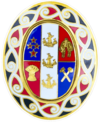 |
6 February 1987 | Elizabeth II | None | Amazing service to the Crown and people of New Zealand, either in civilian or military roles. | None | |
| New Zealand Order of Merit | Knight or Dame Grand Companion (GNZM) | 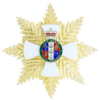 |
30 May 1996 | Elizabeth II | For Merit — Tohu Hiranga | Great service to New Zealand, or for being famous for their talents, contributions, or other good qualities. | None | |
| Knight Companion (KNZM) Dame Companion (DNZM) |
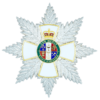 |
|||||||
| Companion (CNZM) | 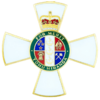 |
|||||||
| Officer (ONZM) | 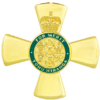 |
|||||||
| Member (MNZM) | 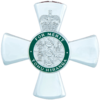 |
|||||||
| King's Service Order | Companion (KSO) |  |
13 March 1975 | Elizabeth II | For service — Mō ngā mahi nui | For valuable volunteer work in the community or loyal service to the Crown or public sector. | King's Service Medal | |
| King's Service Medal | (KSM) |   |
13 March 1975 | Elizabeth II | For service — Mō ngā mahi nui | For volunteer service to the community or service to the Crown in public roles. | ||
| New Zealand Antarctic Medal | (NZAM) | 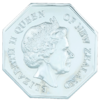  |
1 September 2006 | Elizabeth II | None | For outstanding work in exploring, researching, protecting, or learning about the Antarctic region. | None | |
| New Zealand Distinguished Service Decoration | (DSD) |  |
14 May 2007 | Elizabeth II | None | For excellent military service by members of the New Zealand Defence Force. | None | |
| New Zealand Memorial Cross | — | 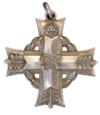 |
12 September 1947 | George VI | None | Given to the closest family members of New Zealand service people who have died in active service since September 1939. | None |
- Orders: These are groups of people who have received special honours. The Order of New Zealand is the highest honour given by New Zealand itself. Then comes the New Zealand Order of Merit, which has five different levels. The Queen's Service Order is also very important. Before 1996, New Zealanders often received British honours like the Order of the Bath or the Order of the British Empire.
- Other Decorations and Medals: These awards usually don't come with titles like "Sir" or "Dame." However, people who receive them can put special letters, called post-nominals, after their name. For example, the New Zealand Antarctic Medal is similar to the British Polar Medal.
- The Most Venerable Order of St John of Jerusalem: This is a special order that helps people. Even though it's not officially a "State Order," the monarch is its leader, and the Governor-General of New Zealand is the head of the Order in New Zealand. Members can use special letters after their name, but they don't get the "Sir" or "Dame" title from this Order.
- Honours Chosen by the Monarch: Some very special honours, like the Order of the Garter or the Order of Merit, are chosen directly by the monarch. They don't need advice from ministers for these. These honours are still part of the New Zealand royal honours system.

